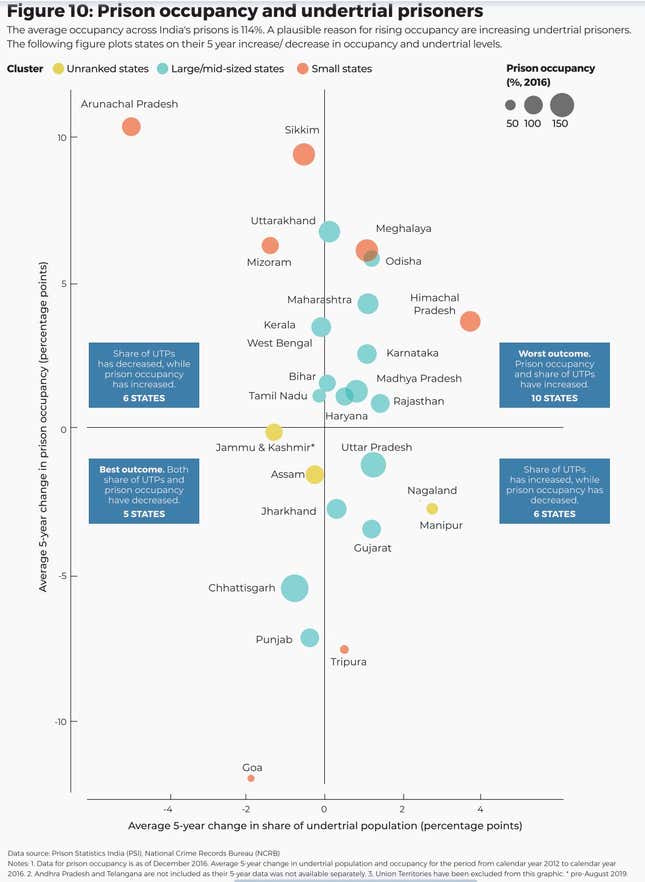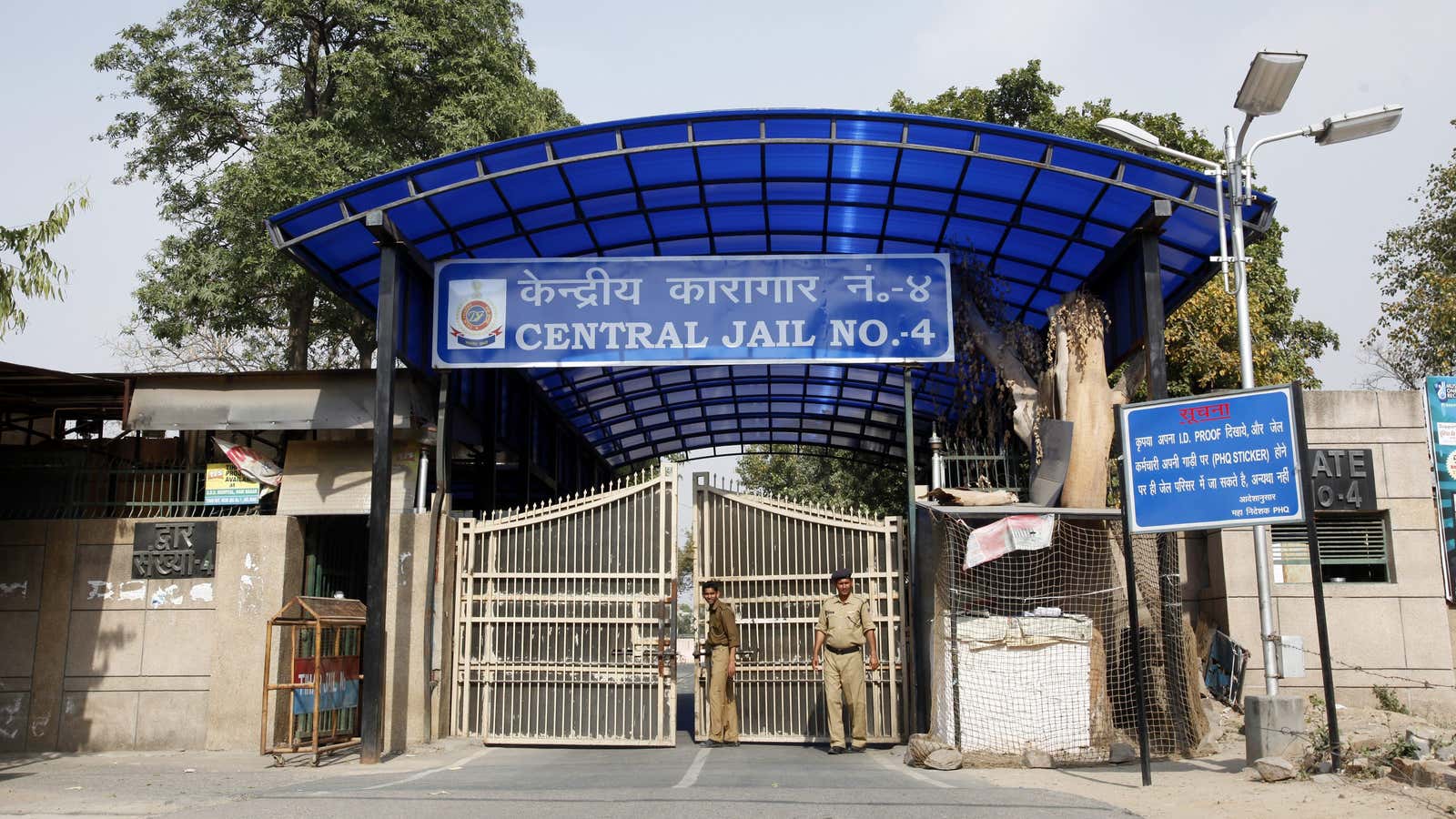India’s biggest states have the biggest prison problems.
Overcrowding is a menace that strikes the most populated states the worst. At the end of December 2016, the nationwide occupancy rate at Indian prisons stood at 114%, according to the India Justice Report 2019, the first-ever state-wise ranking of the police, judiciary, prison, and legal aid systems. The report was prepared by a collective of Indian non-profit institutions and supported by the Tata Trusts.
Twelve of the large and mid-sized states included in the study had an occupancy of over 100%. Chhattisgarh (222.5%), Madhya Pradesh (208%), and Uttar Pradesh (168%) were especially overburdened.
There’s mounting pressure on discipline and resources. Court rulings over the years have “repeatedly highlighted overcrowding; poor sanitation and nutrition; prisoner overstays; the shortage of prison staff, doctors and escorts to bring prisoners to court; the unavailability of timely, quality legal aid; poor mechanisms to review prisoner status; the absence of mandated statutory mechanisms of prison oversight, as well as the near absence of correctional and aftercare services for released prisoners,” the study said.
Prisoners-in-waiting
A key pressure point is that justice is not delivered fast enough.
For every convict, India has two undertrials in its jails, the report says. India ranked 15th out of 217 countries in undertrial incarceration. And 41% of the undertrial population is concentrated in just three states: Uttar Pradesh, Bihar, and Maharashtra.
While the number of convicts increased by 8% between 2010 and 2016, the undertrial prisoner population grew by 22%. Their detention period has also increased, the report found.
“Contributing factors range from an increase in registered crimes, overuse of arrest powers, investigation and prosecution delays, infrastructural deficiencies in getting prisoners to court, paucity of judges, ineffective legal representation and case overload with consequently longer trials,” it said.

Shallow pockets
Nationally, 19 states and union territories spent between Rs20,000 to Rs35,000 ($282 to $493) annually per inmate on upkeep annually, including food, clothing, bedding, water, sanitation, hygiene, medical care, and so on.
Budget utilisation, too, remains unimpressive. This gap has driven the supreme court to consider that it may be “necessary to have the accounts audited to ascertain whether the money is being spent wisely and whether it is being utilised for the benefit of the prisoners or not,” the study said.
Short-staffed
Most prisons in India have vacancies greater than 20%. And the bigger, more populated heartland states post figures that are way higher.
There’s a dearth of medical professionals, too.
The Model Prison Manual, 2016, lays down that there shall be at least one medical officer for every 300 prisoners. In central prisons, there should always be one doctor available, according to it. In Uttarakhand, none of its 10 sanctioned medical officer posts are filled.
This is worrying since prisons are notorious for health risks and low life expectancy. The prevalence of HIV, sexually transmitted infections, hepatitis B and C and tuberculosis is between two and 10 times higher in prison populations than outside. No wonder the prison mortality rate is increasing.
